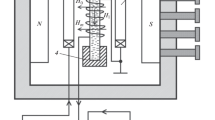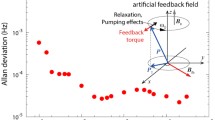Abstract
The influence of a rotating liquid on the intensity of radioactive isotope emission is experimentally investigated in the present paper. It is concluded that the spin-torsion field influences the position of the energy level of the excited cesium-137 nucleus shifting it downward.
Similar content being viewed by others
REFERENCES
S. G. Ekhanin, V. I. Lunev, B. V. Okulov, and G. S. Tsarapkin, in: Pilot Research of Spin-Torsion Interactions [in Russian], Publishing House of the Sibirian Scientific-Research Center of Abnormal Phenomena, Tomsk (1995), pp. 81–86.
I. A. Mel'nik, Paper deposited at VINITI, No. 1032-mg92, Moscow (February 5, 1992).
A. I. Abramov et al., Principles of Experimental Methods in Nuclear Physics [in Russian], Énergoatomizdat, Moscow (1985).
A. E. Akimov and V. Ya. Tarasenko, Izv. Vyssh. Uchebn. Zaved., Fiz., No. 3, 5–12 (1992).
Author information
Authors and Affiliations
Rights and permissions
About this article
Cite this article
Mel'nik, I.A. Experimental Investigations of the Influence of a Rotating Liquid on the Intensity of Radioactive Isotope Emission. Russian Physics Journal 46, 1020–1024 (2003). https://doi.org/10.1023/B:RUPJ.0000020813.14429.61
Issue Date:
DOI: https://doi.org/10.1023/B:RUPJ.0000020813.14429.61




